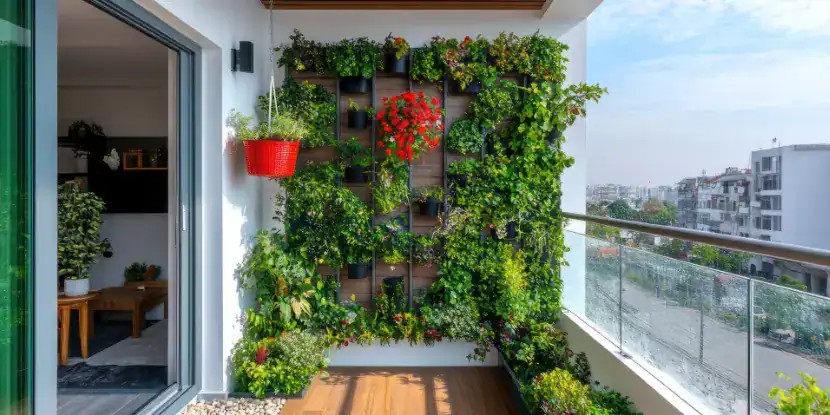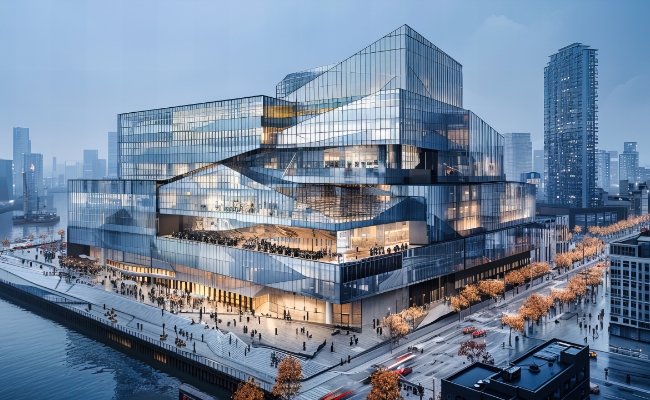
Building a Greener Tomorrow: The Ultimate Guide to Sustainable Homes and Communities
The conversation around Eco-Friendly Living has evolved dramatically. What once centered on recycling bins and reusable shopping bags has blossomed into a comprehensive philosophy that reshapes our homes, communities, and daily routines. Today, Sustainable Living is a sophisticated integration of intelligent design, cutting-edge technology, and a deep-seated sense of community. It’s a holistic approach that promises not only a lighter footprint on our planet but also significant improvements to our Health & Wellness, personal finances, and overall quality of life. This shift is more than a trend; it’s a blueprint for the future of residential life, where our living spaces actively contribute to a healthier world and a more fulfilling existence. This guide explores the multifaceted world of modern green living, offering actionable insights for creating a home that is as smart and efficient as it is nurturing and restorative.
The Architectural Blueprint: Foundations of a Modern Green Home
Before the first smart device is installed or the first community garden is planted, the foundation of true Eco-Friendly Living begins with the physical structure of the home itself. Thoughtful architectural design and material selection are the cornerstones of a building that works in harmony with its environment, rather than against it. This foundational stage of Home Improvement is critical for long-term energy savings and creating a healthy indoor atmosphere.
Passive Design: Working with Nature, Not Against It
Passive design is an architectural strategy that leverages natural elements—primarily sunlight, shade, and airflow—to heat, cool, and light a home with minimal energy consumption. It’s a prime example of intelligent, low-tech sustainability. Key principles include:
- Site Orientation: Positioning a house to maximize sun exposure in the winter (for warmth) and minimize it in the summer (for cooling). In the Northern Hemisphere, this often means having large, south-facing windows.
- Natural Ventilation: Designing window placements and internal layouts to create cross-breezes that naturally cool the home, reducing the need for air conditioning.
- Thermal Mass: Using materials like concrete, brick, or tile that can absorb and store heat. In winter, these materials absorb solar heat during the day and release it slowly at night. In summer, they help keep the interior cool.
- High-Performance Insulation: Properly insulating walls, roofs, and floors is one of the most effective ways to reduce energy needs. A well-insulated home can cut heating and cooling costs by up to 40%, a significant win for your Personal Finance and Financial Planning.
Sustainable Building Materials and Healthy Interiors
The materials used to construct and finish a home have a profound impact on both the environment and indoor air quality. The focus in Green Living has shifted towards materials that are renewable, recycled, and non-toxic. This directly impacts your family’s Health & Wellness.
- Renewable Resources: Materials like bamboo (a fast-growing grass), cork, and reclaimed wood reduce deforestation. They add a unique aesthetic to Interior Design and Home Decor.
- Recycled Content: Products like recycled steel, composite decking made from plastic bags and wood fibers, and insulation made from recycled denim divert waste from landfills.
- Low-VOC Products: Volatile Organic Compounds (VOCs) are chemicals found in many paints, adhesives, and finishes that can off-gas and harm indoor air quality. Choosing low- or zero-VOC options is crucial for maintaining good Mental Health and physical well-being, especially for those with respiratory issues. This is a key consideration for Family Life and even Pet Care, as pets are also sensitive to airborne toxins.
Advanced Water Conservation

Water is a precious resource, and modern sustainable homes employ sophisticated systems to conserve it. Beyond simple low-flow fixtures, these systems create a circular water economy within the property.
- Rainwater Harvesting: Systems collect rainwater from rooftops and store it in large cisterns. This water can be used for Gardening Tips and landscape irrigation, toilet flushing, and laundry, significantly reducing reliance on municipal water.
- Greywater Recycling: This technology captures gently used water from showers, bathroom sinks, and washing machines. After basic filtration, it can be reused for irrigation or flushing toilets. A family of four can save tens of thousands of gallons of water per year with a greywater system.
The Smart Revolution: Technology’s Role in Eco-Friendly Living
If passive design is the soul of a sustainable home, then smart technology is its brain. The integration of Technology for Home systems allows for unprecedented control over energy consumption, resource management, and overall efficiency. A Smart Home is not just about convenience; it’s about data-driven sustainability that offers powerful Budget Tips by cutting utility waste.
Intelligent Energy Management
The modern Smart Home ecosystem is designed to eliminate energy waste without sacrificing comfort. These devices learn your habits and make micro-adjustments that add up to significant savings.
- Smart Thermostats: Devices like the Google Nest or Ecobee learn your schedule and adjust the temperature automatically, ensuring you’re not heating or cooling an empty house. They can be controlled remotely and provide detailed energy reports, turning energy saving into a tangible part of your Personal Development. Many users report saving 10-15% on heating and cooling bills.
- Smart Lighting: LED bulbs paired with smart systems (like Philips Hue) allow for scheduling, dimming, and motion-sensor activation. This ensures lights are only on when needed and at the appropriate brightness, extending bulb life and cutting electricity costs.
- Energy Monitoring Systems: Devices like the Sense Home Energy Monitor attach to your electrical panel and use AI to identify individual appliances. They provide real-time data on energy usage, helping you pinpoint “vampire loads” (devices that draw power even when off) and make informed decisions. This is a powerful tool for anyone serious about their Financial Planning.
Renewable Energy and Storage
The ultimate goal for many sustainable homes is energy independence. Solar technology has become more accessible and efficient, making it a cornerstone of modern Eco-Friendly Living.
- Residential Solar Panels: Photovoltaic (PV) panels convert sunlight directly into electricity. The cost of solar has dropped over 70% in the past decade, making it a viable investment. Depending on location and system size, a solar array can offset a significant portion, if not all, of a home’s electricity bill. This is a major topic in green Investment News.
- Home Battery Storage: Systems like the Tesla Powerwall store excess energy generated by solar panels during the day. This stored energy can be used at night, during peak-demand hours when electricity is most expensive, or during a power outage, providing both savings and enhanced Home Security.
Beyond the Front Door: Lifestyle, Community, and Holistic Wellness
True sustainability extends beyond the physical structure of a house. It’s a lifestyle that encompasses our consumption habits, our connection to nature, and our relationships with our neighbors. Modern eco-developments are increasingly designed to foster this holistic approach, creating a powerful sense of Community Living and shared purpose.

Cultivating a Zero-Waste and Minimalist Mindset
The principles of Zero Waste and Minimalism are about mindful consumption rather than deprivation. This philosophy encourages us to reduce what we bring into our homes, reuse what we can, and recycle or compost the rest. This involves practical steps like:
- Effective Meal Planning: Reducing food waste by planning meals, using leftovers creatively, and composting food scraps. This connects Healthy Recipes with sustainable practices.
- Conscious Consumerism: Prioritizing quality over quantity, supporting Sustainable Fashion brands, and avoiding single-use plastics. This practice of Decluttering both our homes and our lives can lead to improved Mental Health.
- DIY and Natural Solutions: Embracing DIY Projects for home repairs and using Natural Cleaning supplies made from simple ingredients like vinegar and baking soda. These Cleaning Tips reduce chemical exposure and plastic waste.
The Power of Green and Shared Spaces
Connecting with nature and community is fundamental to well-being. Thoughtfully designed neighborhoods integrate green spaces to promote both.
- Urban Gardening and Edible Landscapes: Community gardens, rooftop farms, and edible landscaping provide residents with fresh, organic produce, fostering knowledge of Food & Cooking and Nutrition News. These spaces are hubs for social interaction and Volunteering, strengthening community bonds. They offer excellent opportunities for Plant Care and learning new Hobbies.
- Shared Amenities: Centralized amenities like tool libraries, workshops, and shared electric vehicles reduce individual ownership and consumption. This fosters a culture of collaboration and has a significant positive Social Impact.
- Biophilic Design: This Interior Design concept involves incorporating natural elements—like indoor plants, natural light, and views of nature—into our living spaces. Studies show biophilic design can reduce stress, improve cognitive function, and enhance Sleep Health, making it a key component of Holistic Health.
Practical Implementation: A Roadmap to Greener Living

Adopting a sustainable lifestyle is a journey, not a destination. Whether you are a renter in a small apartment or a homeowner planning a major renovation, there are actionable steps you can take. The key is to balance ambition with practicality and make choices that align with your budget and lifestyle.
Best Practices and Actionable Tips
- For Renters and Beginners: Start with small, high-impact changes. Switch to LED bulbs, get a smart power strip to cut vampire loads, start a small herb garden on your windowsill (a great entry into Urban Gardening), and focus on reducing waste through mindful shopping and composting. Embrace Organization Tips to create a more functional, minimalist space.
- For Homeowners: Conduct an energy audit to identify the biggest areas for improvement. Prioritize projects with the best ROI, such as adding insulation or upgrading to a smart thermostat. When it’s time to replace appliances, choose Energy Star-rated models. These steps are a form of long-term Financial Planning.
- For a Thriving Work-Life Balance: For those who enjoy Remote Work, a green home provides a healthier and more productive environment. Better air quality and natural light can boost focus, while lower utility bills reduce financial stress, contributing to better Work-Life Balance and overall Stress Management.
Common Pitfalls and How to Avoid Them
- Greenwashing: Be wary of products marketed as “eco-friendly” without clear evidence. Look for third-party certifications like Energy Star, LEED, or Fair Trade to ensure you’re making a genuinely sustainable choice.
- High Upfront Costs: While technologies like solar panels have a high initial cost, they should be viewed as an investment. Research available government rebates, tax credits, and green financing options to make them more affordable. Start with lower-cost improvements first.
- Tech Overload: A Smart Home can become complicated. Choose systems that integrate well with each other and have user-friendly interfaces. The goal is to use technology to simplify your life, not complicate it.
Conclusion: A Future-Ready Lifestyle
Modern Eco-Friendly Living is a dynamic and optimistic vision for the future. It’s a holistic integration of intelligent architecture, powerful technology, and mindful lifestyle choices that create homes and communities that are resilient, efficient, and deeply connected. By embracing these principles, we move beyond simply sustaining our planet to actively regenerating it. This journey offers more than just environmental benefits; it leads to improved Health & Wellness, stronger financial security, and a more profound sense of community and purpose. Whether you are making small changes in your daily routine or undertaking a major Home Improvement project, every step towards a greener lifestyle is an investment in a healthier, more sustainable, and more fulfilling future for all.
Archives
- December 2025
- November 2025
- October 2025
- September 2025
- August 2025
- October 2023
- September 2023
- August 2023
- July 2023
- June 2023
- May 2023
- April 2023
- March 2023
- February 2023
- January 2023
- December 2022
- November 2022
- October 2022
- September 2022
- August 2022
- June 2022
- May 2022
- April 2022
- March 2022
- January 2022
- December 2021
- November 2021
- October 2021
- August 2021
- November 2020
- July 2020
- May 2020
- April 2020
- March 2020
- August 2018
- July 2018
- June 2018
- April 2018
- March 2018
Categories
- Aftercare Procedures
- Age Groups
- AI/ML
- Alternative Medicine
- Animal Health
- Animal Husbandry
- Animals
- Anti-Aging
- Architectural Design
- Auditory Science
- Augmented Reality
- Automation
- Babies
- Baby
- Beauty & Skincare
- Biohacking
- Biomechanics
- Book Reviews
- Breastfeeding
- Budgeting
- Budgeting Strategies
- Business
- Cardiovascular Health
- Career Advice
- Career Development
- Career Growth
- Cats
- Chess
- Chronobeauty
- Circular Economy
- Cleaning Tips
- Cloud Computing
- Cognitive Health
- Cognitive Performance
- Cognitive Science
- Community
- Community Building
- Community Engagement
- Community Living
- Computer Vision
- Consumer Guides
- Consumer Trends
- Container Gardening
- Content Analysis
- Content Non-Technical
- Content Strategy
- Cosmetic Chemistry
- Cultural Events
- Cycling
- Data Analysis
- Data Engineering
- Data Science
- Design Psychology
- Developer Productivity
- Diet
- Diet
- Digital Identity
- Digital Media
- Digital Wellbeing
- DIY Projects
- Dogs
- Engineering Culture
- Entertainment News
- Environmental Impact
- Environmental Science
- Equity Compensation
- Ethical AI
- Exercise
- Exercise Science
- Exercise Technique
- Exotic Pets
- Fall Gardening
- Family
- Family Health
- Family Life
- Fashion Business
- Fashion Industry
- Fashion News
- Fashion Tech
- Financial Analysis
- Financial Optimization
- Financial Planning
- Flooring Maintenance
- Food
- Food Psychology
- Food Safety
- Food Tech
- Functional Fitness
- Functional Training
- Future Of Work
- Garden Care
- Garden Maintenance
- Gardening Tips
- Gig Economy
- Greece
- Greek
- Greek Food
- Green Technology
- Gymnastics
- Hardware Engineering
- Health
- Health And Wellness
- Health Informatics
- Health Science
- Health Tech
- Healthcare Management
- Healthy Eating
- Healthy Recipes
- Holistic Health
- Holistic Wellness
- Home & Living
- Home Decor
- Home Financing
- Home Health
- Home Improvement
- Home Organization
- Horticulture
- Identity Management
- Industrial Design
- Industry Analysis
- Infant Nutrition
- Infrastructure Management
- Ingredient Deep Dive
- Integrative Health
- Integrative Medicine
- Interior Design
- Internet of Things
- Internet of Things (IoT)
- Invalid Request
- Investment Strategies
- Investment Strategy
- IoT
- Kids
- Leadership Development
- Learning Strategies
- Lifestyle
- Lifestyle Brands
- Lifestyle News
- Lifestyle Optimization
- Literary Criticism
- Literature
- Logistics Management
- Material Science
- Materials Science
- Meal Planning
- Media Analysis
- Meditation
- Mental Health
- Mental Performance
- Mental Wellness
- Miami
- Miami Food
- Mind And Body
- Minimalism
- Mobile Development
- Neuroscience
- No Applicable Categories
- Nutrition
- Nutrition News
- Operating Systems
- Operational Resilience
- Opinion
- Organization Tips
- Outdoor Living
- Over 40
- Over 50
- Over 60
- Parenting
- Parenting
- Parenting Strategies
- Performance
- Personal Development
- Personal Finance
- Personal Growth
- Personal Productivity
- Pet Care
- Pet Safety
- Philosophy
- Politics
- Productivity
- Protein
- Psychology
- Psychology of Space
- Reading Culture
- Real Estate Investment
- Recipes
- Regulatory Compliance
- Remote Work
- Renovation Planning
- Resource Management
- Respiratory Health
- Responsible Pet Ownership
- Retail Strategy
- Robotics
- Science
- Seafood
- Seasonal Gardening
- Security
- Sedentary Health
- Self-Care
- Skincare Science
- Skincare Trends
- Sleep
- Sleep Health
- Smoothies
- Social Impact
- Soft Skills
- Soil Health
- Spatial Computing
- Spatial Design
- Stress Management
- Supplements
- Sustainability
- Sustainability Science
- Sustainable Engineering
- Sustainable Fashion
- Systems Engineering
- Tax Optimization
- Tax Strategy
- Tech Investment
- Travel
- Travel News
- Travel Safety
- Travel Tips
- Trend Analysis
- Uncategorized
- Urban Planning
- User Experience
- Veggie
- Virtual Events
- Volunteering
- Wealth Management
- Wearable Technology
- Wellness
- Wellness Technology
- Work-Life Balance
- Workplace Culture
- World
- Writing
- Writing Skills
- Yoga News
- Zero Waste




Leave a Reply